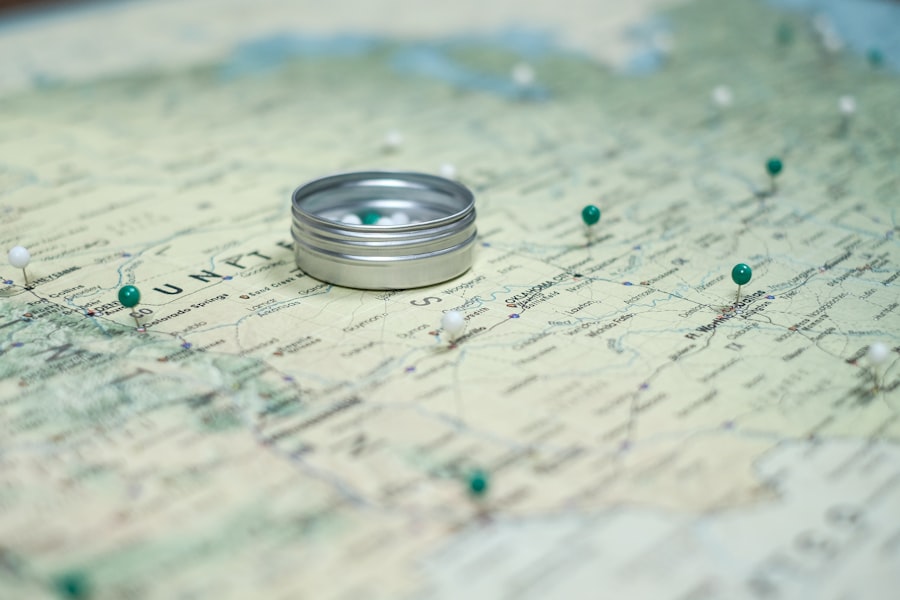The International Space Station (ISS) stands as a monumental achievement in human engineering and international collaboration. Launched in 1998, the ISS is a microgravity laboratory that orbits Earth, serving as a unique platform for scientific research, technology development, and international cooperation. It is a joint project involving five participating space agencies: NASA (United States), Roscosmos (Russia), JAXA (Japan), ESA (European Space Agency), and CSA (Canadian Space Agency).
The station has become a symbol of what humanity can achieve when nations work together toward common goals, transcending borders and political differences. The ISS is not merely a scientific laboratory; it is also a testament to human ingenuity and resilience. Orbiting at an altitude of approximately 400 kilometers (about 248 miles), the station travels at a speed of roughly 28,000 kilometers per hour (17,500 miles per hour).
This allows it to complete an orbit around Earth approximately every 90 minutes. The ISS is equipped with state-of-the-art facilities that enable astronauts to conduct experiments in various fields, including biology, physics, astronomy, and materials science. The research conducted aboard the ISS has far-reaching implications for life on Earth and future space exploration endeavors.
Key Takeaways
- The International Space Station (ISS) is a habitable artificial satellite that orbits the Earth, serving as a space environment research laboratory.
- The ISS orbits the Earth approximately every 90 minutes at a speed of 17,500 miles per hour, allowing it to complete 16 orbits per day.
- The best times and locations for spotting the ISS vary depending on the observer’s location and the station’s orbit, with early morning and evening passes being the most common.
- There are various tools and apps available for tracking the ISS, including websites, smartphone apps, and social media accounts that provide real-time tracking information.
- Tips for spotting the ISS in the night sky include finding a clear, dark location away from city lights and using a compass or star chart to determine the direction of the station’s path.
Understanding the Orbit of the ISS
The orbit of the ISS is a carefully calculated trajectory that allows it to maintain a stable position relative to Earth while facilitating scientific research and international collaboration. The station orbits Earth in a low Earth orbit (LEO), which is defined as an altitude between 160 kilometers (99 miles) and 2,000 kilometers (1,200 miles). This specific orbit was chosen for several reasons, including the ability to conduct experiments in microgravity and the relative ease of access for resupply missions.
One of the most fascinating aspects of the ISS’s orbit is its inclination of approximately 51.6 degrees to the equator. This inclination allows the station to pass over a significant portion of the Earth’s surface, including populated areas in North America, Europe, and parts of Asia. As the Earth rotates beneath it, the ISS can be seen from various locations around the globe, making it accessible for observation by amateur astronomers and space enthusiasts alike.
The combination of its altitude and speed means that the ISS experiences 16 sunrises and sunsets each day, creating a dynamic environment for both crew members aboard the station and those observing from below.
Best Times and Locations for Spotting the ISS

Spotting the ISS in the night sky can be an exhilarating experience, but knowing when and where to look is crucial for successful observation. The best times to see the ISS are during dawn or dusk when the station is illuminated by sunlight while the observer is in darkness. This typically occurs shortly after sunset or just before sunrise.
During these times, the ISS appears as a bright moving object gliding across the sky, often outshining even the brightest stars. Geographically, the visibility of the ISS depends on its orbital path. The station travels over a wide swath of Earth, making it visible from many locations.
However, certain regions may have more favorable viewing conditions than others. For instance, areas closer to the equator may have more frequent passes due to the inclination of the orbit. Additionally, urban areas with minimal light pollution provide better opportunities for spotting the ISS.
Websites and apps dedicated to tracking satellite passes can provide specific times and locations for optimal viewing based on one’s geographic coordinates.
Tools and Apps for Tracking the ISS
| Tool/App Name | Description | Platform | Features |
|---|---|---|---|
| ISS Tracker | Real-time tracking of the ISS | Web, iOS, Android | Live map, notifications |
| Spot The Station | Find out when the ISS will be visible from your location | Web, iOS, Android | Alerts, sighting opportunities |
| ISS Live Now | Live video streaming from the ISS | Web, iOS, Android | Live video feed, crew details |
In today’s digital age, technology has made it easier than ever to track the ISS and plan viewing opportunities. Numerous tools and applications are available that provide real-time information about the station’s location and upcoming passes over specific locations. One popular resource is NASA’s official website, which offers a dedicated section for tracking the ISS.
Users can input their location to receive notifications about when the station will be visible in their area. Mobile applications such as “Heavens-Above,” “ISS Tracker,” and “SkySafari” have gained popularity among space enthusiasts. These apps utilize GPS technology to provide users with precise information about when and where to look for the ISS in relation to their current location.
Some apps even offer augmented reality features that allow users to point their smartphones at the sky to identify celestial objects, including the ISS. By leveraging these tools, individuals can enhance their stargazing experience and share their observations with friends and family.
Tips for Spotting the ISS in the Night Sky
Successfully spotting the ISS requires a combination of preparation and patience. First and foremost, it is essential to check local weather conditions before planning an observation session. Clear skies are crucial for visibility; clouds can obstruct views of the station as it passes overhead.
Additionally, finding a location with minimal light pollution will significantly enhance one’s chances of seeing the ISS clearly. Timing is also critical when attempting to spot the ISS. Observers should arrive at their chosen viewing location a few minutes early to allow their eyes to adjust to the darkness.
Once in position, it’s helpful to familiarize oneself with the general direction from which the ISS will appear. Typically, it will rise in the west or southwest and set in the east or northeast, depending on its orbital path at that time. Observers should remain patient; while passes can last only a few minutes, they are often breathtakingly beautiful as they streak across the sky.
Photographing the ISS

Capturing images of the ISS as it traverses the night sky can be a rewarding endeavor for both amateur and professional photographers alike. However, photographing this fast-moving object presents unique challenges due to its speed and brightness. To achieve successful shots, photographers should consider using a tripod to stabilize their camera during long exposure times.
A camera with manual settings will allow for greater control over exposure time, aperture, and ISO settings. When preparing to photograph the ISS, it’s advisable to practice tracking moving objects in advance. This can be done by using a telescope or binoculars to follow celestial bodies like planets or stars before attempting to capture images of the station itself.
Additionally, using a wide-angle lens can help capture more of the sky while allowing for some foreground interest in photographs. Timing is crucial; knowing when the ISS will pass overhead allows photographers to set up their equipment in advance and be ready for that fleeting moment when it appears.
Educational Opportunities with the ISS
The International Space Station serves as an invaluable educational resource that inspires curiosity about science, technology, engineering, and mathematics (STEM) among students worldwide. Various educational programs have been developed around the ISS that engage students in hands-on learning experiences related to space exploration and scientific research. For instance, NASA’s “Education Express” program provides educators with resources and activities designed to integrate space science into classroom curricula.
Moreover, students have unique opportunities to participate in experiments conducted aboard the ISS through programs like “Student Spaceflight Experiments Program” (SSEP). This initiative allows students to design experiments that may be selected for actual flight aboard the station, fostering a sense of ownership over their learning while providing real-world applications of scientific principles. Such programs not only enhance students’ understanding of scientific concepts but also encourage teamwork, critical thinking, and problem-solving skills.
Future of the ISS and Space Exploration
As we look toward the future of space exploration, discussions surrounding the International Space Station’s role are increasingly prominent. The current agreement among partner nations extends until 2024; however, there are ongoing conversations about extending its operational life until at least 2028 or beyond. The future of the ISS will likely involve transitioning from government-led operations to commercial partnerships that could open new avenues for research and development in low Earth orbit.
In addition to its continued use as a research platform, plans are underway for future missions that will leverage insights gained from experiments conducted aboard the ISS. These include missions aimed at returning humans to the Moon under NASA’s Artemis program and eventually sending astronauts to Mars. The knowledge acquired from living and working on the ISS will be crucial in preparing for long-duration space missions where factors such as microgravity effects on human health must be understood thoroughly.
The International Space Station remains a beacon of human achievement in space exploration, serving as both a laboratory for scientific discovery and a platform for international collaboration. As we continue to push boundaries in our quest for knowledge beyond our planet, the legacy of the ISS will undoubtedly influence future generations of explorers and scientists alike.


